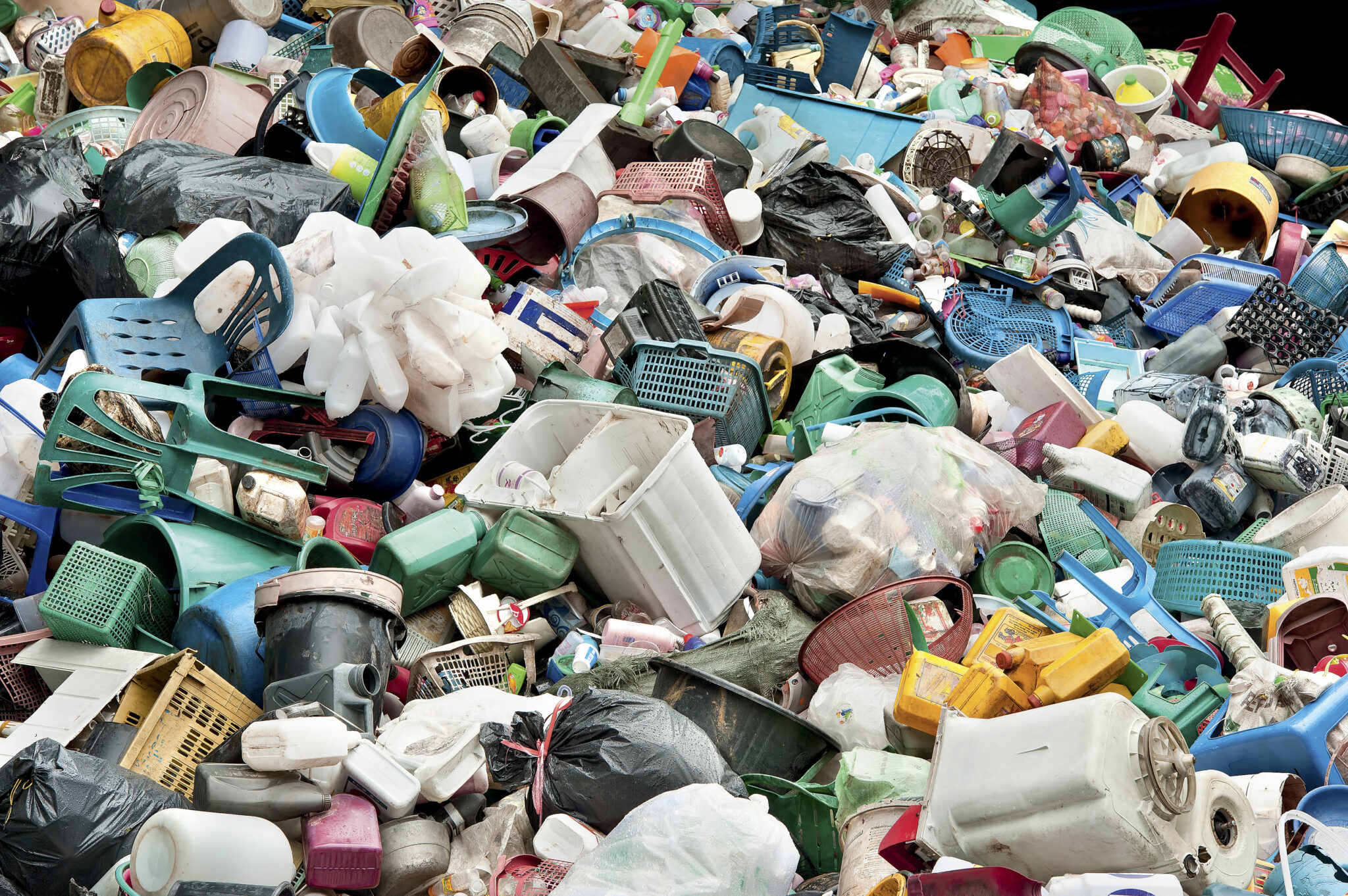It’s no secret that we have a plastic waste problem: Microplastics have been found everywhere, from the clouds above Mount Fuji to the depths of the Mariana Trench. One reason is that the recycling of most plastic waste today is mechanical—plastics are collected, washed, sorted, and melted. It’s an inefficient process that produces weaker, lower-quality material and can contribute to microplastic pollution. If only plastics could, by some magic, be recycled into new, high-quality, sustainable materials.
Enter chemical recycling, a process that breaks down the molecular structure of plastic waste to its original components (monomers) before being rebuilt as good-as-new synthetic polymers, which can then be made into plastic that is just as strong as the original. Since the 1980s, chemical recycling has been applied to comparatively minor sources of plastic waste, like polyethylene terephthalate—the material from which plastic bottles are made—but, thanks to Berkeley researchers, we are one step closer to changing that.
A team of eight chemists has developed a breakthrough catalytic process that can vaporize the two highest-volume plastics used in products like bags, toys, car bumpers, and yogurt cups—polyethylene and polypropylene—into raw materials ready for reuse. “Few people thought that was possible…. I am still amazed that the reaction works, even though we have done it many times now,” said Berkeley chemistry Professor John Hartwig, Ph.D. ’90, who led the team.
At the molecular level, some of the most abundantly used plastics are challenging to recycle because they are made of long carbon chains with strong, stable bonds. But the researchers identified catalysts to cut these chains into shorter pieces, creating hydrocarbon gases with reactive ends. From there, they could break the chains down further into monomers by removing one carbon atom at a time. “It’s a little like taking one pearl out at a time from a pearl necklace that was cut in the middle,” Hartwig said.
The team has been working on catalytic plastic deconstruction since 2019. “The major challenge we overcame was to conduct these reactions with catalysts that can be reused and that come from inexpensive, earth-abundant metals,” Hartwig said. Graduate student RJ Conk, Ph.D. ’26, cracked the code: a combination of tungsten oxide and sodium, which are both affordable and earth abundant.
To scale the process, researchers still need to learn to deal with waste plastic that contains additives and contaminants. Nonetheless, the new catalytic process is a crucial step: “We have shown that it is possible to fully deconstruct the molecular chains in these plastics at relatively low temperatures,” Hartwig said, while noting that plastics production emits a few trillion pounds of carbon dioxide annually. His hope, he said, is that by “using the existing sources of carbon in our recycling bins to make what we [currently] make from petroleum,” we could considerably reduce that figure.






















